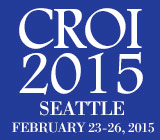 New York City is succeeding in an effort to better link people diagnosed with HIV into prompt medical care, as well as getting them treated and to full viral suppression, MedPage Today reports. Researchers used New York City HIV surveillance registry data to calculate the rate of timely linkage into care and viral suppression among adults diagnosed with HIV between 2006 and 2013. They presented their findings at the 2015 Conference on Retroviruses and Opportunistic Infections (CROI) in Seattle.
New York City is succeeding in an effort to better link people diagnosed with HIV into prompt medical care, as well as getting them treated and to full viral suppression, MedPage Today reports. Researchers used New York City HIV surveillance registry data to calculate the rate of timely linkage into care and viral suppression among adults diagnosed with HIV between 2006 and 2013. They presented their findings at the 2015 Conference on Retroviruses and Opportunistic Infections (CROI) in Seattle.
The proportion of HIV-positive New Yorkers who were linked to care within three months of diagnosis increased from 68 percent in 2006 to 76 percent in 2013. In 2006, 24 percent of newly diagnosed New Yorkers achieved full viral suppression within six months; that figure rose to 54 percent in 2013. The rates of viral suppression a year after diagnosis increased from 36 percent to 69 percent.
These increases were relatively consistent across the spectrum of CD4 counts among the newly diagnosed New Yorkers. By 2013, there was no particular difference in the viral suppression rates a year after diagnosis, based on various groups stratified by CD4 count range: All groups had a viral suppression rate of about 80 percent except those with 500 or more CD4s, whose rate of viral suppression a year after diagnosis was in the mid-60 percent range. This difference is likely indicative of ambivalence among HIV clinicians about whether to start treatment immediately or to wait until CD4s drop below 500. Increasing research has shown the benefits of treating HIV before CD4s drop below that point. But there is still debate over this issue.
To read the MedPage Today story, click here.
To read the conference abstract, click here.
To read a POZ/AIDSmeds feature on the debate over when to start treatment, click here.
Advertisement
Advertisement
Advertisement






Comments
Comments